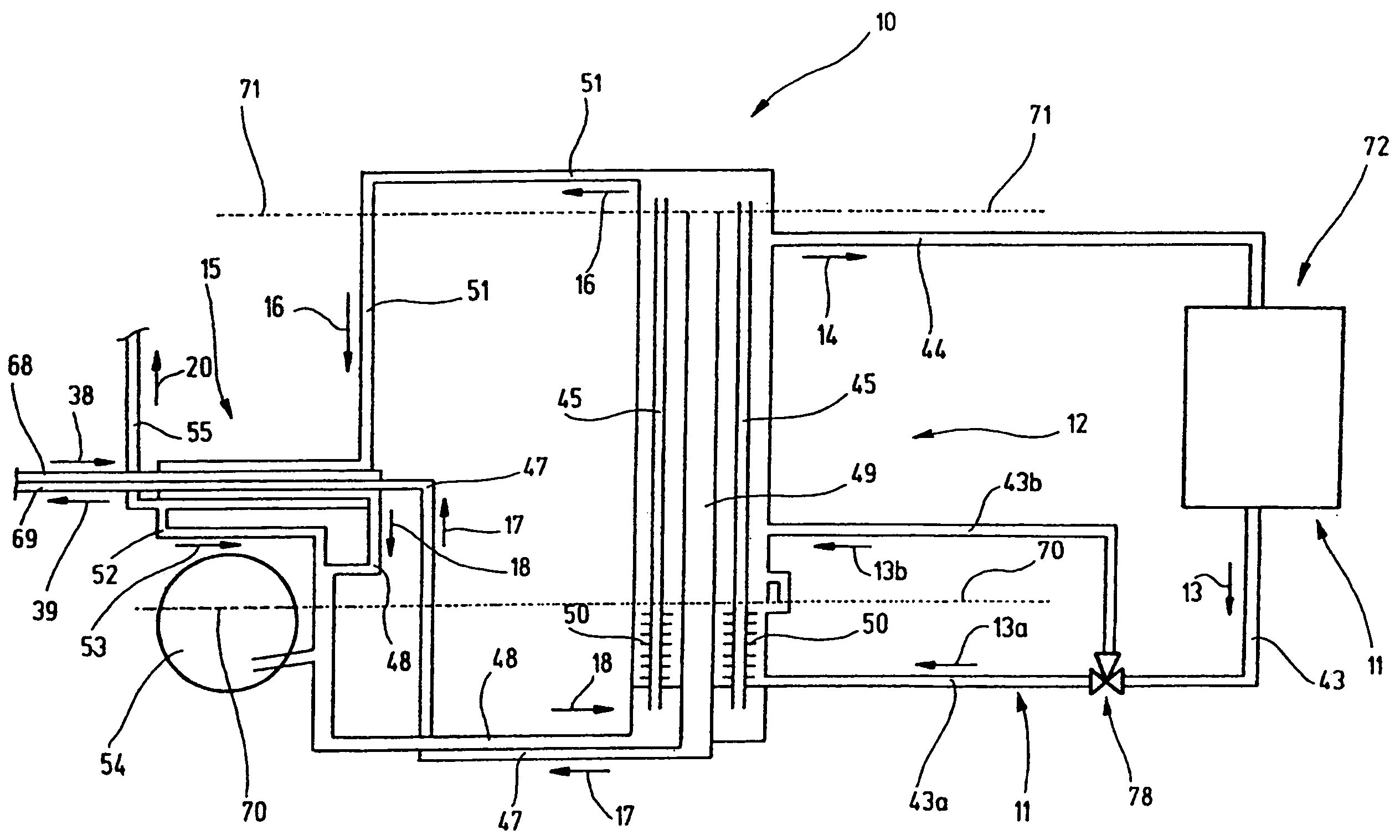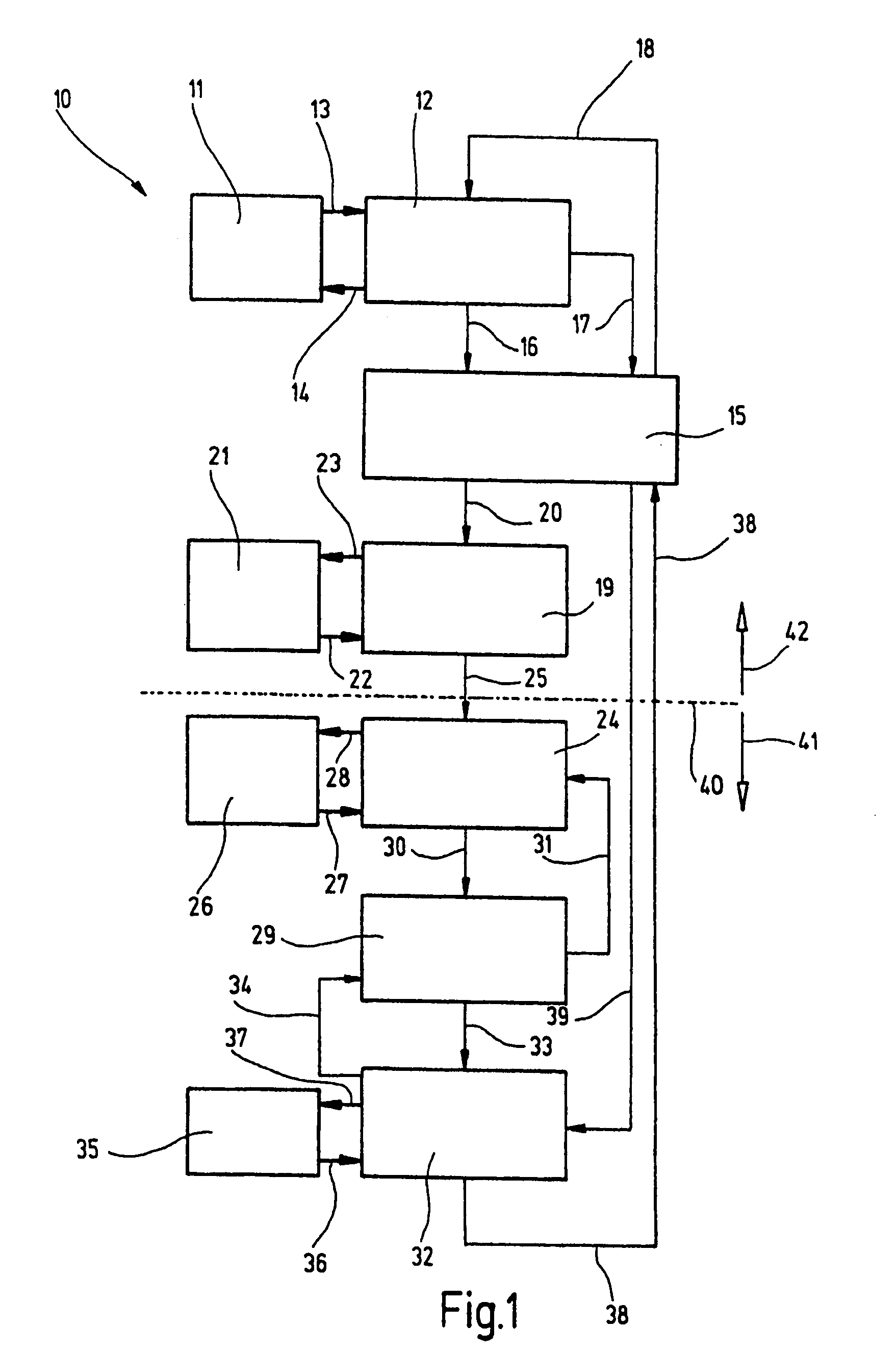Refrigeration unit
a refrigerating unit and refrigeration technology, applied in the field of refrigerating units, can solve the problems of high investment, low efficiency, and disadvantages of absorption refrigerating units, and achieve the effects of low efficiency, high investment, and low cos
- Summary
- Abstract
- Description
- Claims
- Application Information
AI Technical Summary
Benefits of technology
Problems solved by technology
Method used
Image
Examples
Embodiment Construction
[0023]FIG. 1 shows a block diagram of a refrigerating unit 10. Furthermore, FIGS. 2a and 2b, which complement one another as partial figures, show the refrigerating unit 10 according to FIG. 1 in schematic representation. The refrigerating unit 10 has an expeller 12 which is actively connected to a thermal solar system 11 by means of heat transfer medium lines represented as arrows 13 and 14 (FIG. 2a: 43, 43a, 43b, 44). A fuel vapor supply line represented as an arrow 16 (FIG. 2a: 51) and a supply line, represented as an arrow 17 (FIG. 2a: 47) and serving to convey a solution which is low in fuel, leads from the expeller 12 to a triple heat exchanger 15, from which a supply line, represented as an arrow 18 (FIG. 2a: 48) and serving to convey a solution which is high in fuel, leads to the expeller 12. The triple heat exchanger 15 is actively connected to a condenser 19 by means of a supply line, represented as an arrow 20 (FIGS. 2a / 2b: 55), for fuel vapor and, if needed or desired, w...
PUM
 Login to View More
Login to View More Abstract
Description
Claims
Application Information
 Login to View More
Login to View More - R&D
- Intellectual Property
- Life Sciences
- Materials
- Tech Scout
- Unparalleled Data Quality
- Higher Quality Content
- 60% Fewer Hallucinations
Browse by: Latest US Patents, China's latest patents, Technical Efficacy Thesaurus, Application Domain, Technology Topic, Popular Technical Reports.
© 2025 PatSnap. All rights reserved.Legal|Privacy policy|Modern Slavery Act Transparency Statement|Sitemap|About US| Contact US: help@patsnap.com



